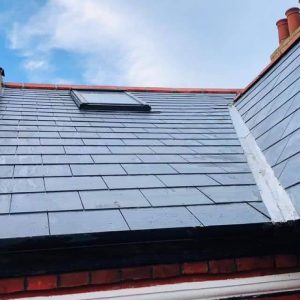
Understanding Breathable and Non-breathable Membranes
Both breathable and non-breathable membranes share a primary function: to prevent water from entering the roof. However, their differences lie in their approach to ventilation and how they manage condensation, an increasingly prevalent issue in modern, well-insulated buildings.
Breathable membranes, as the name suggests, allow a building to breathe. Positioned on the cold side of the roof's insulation and beneath the battens, they allow moisture to escape from the building. This escape is accomplished due to the membrane's low water vapour resistance, allowing vapour to travel through it easier, thereby reducing the risk of condensation.
Non-breathable membranes, on the other hand, have high water vapour resistance, limiting moisture transfer. These membranes are not air permeable and are suitable where effective ventilation is already in place.
The final choice between the types of membrane will also have to factor in what type of roofing material for the roof you are planning on using as well.
Choosing the Right Membrane
Choosing the right membrane for your project is dependent on several factors. The roof's location, pitch, batten gauge, and type of tile used are all essential considerations. Independent British Board of Agrément (BBA) tests on most UK-manufactured membranes provide valuable information to help you select the most suitable product. Manufacturers like Dupont, Roofshield and Kingspan often produce high-quality breathable membranes for roofing.
Very little moisture enters the batten space above when using a non-breathable membrane below the slates or tiles. However, with a breathable roof membrane, there is far greater moisture transfer, making it crucial that there is adequate air movement above the membrane.
Regardless of the membrane choice, it's crucial to maximise any opportunity to improve roof ventilation to reduce the chances of condensation. This is especially true for breathable membranes that should not be used as the sole means of ventilation, according to British Standards BS5250. For free advice, you can always ask our roofers in Stockport or call one of our team 0161 826 9974.
Durability and Lifespan
Membrane resistance to wind and tearing, in large part, depends on the quality of the material used. Tyvek breather membrane, for instance, is known for its durability. Lifespan is a crucial factor to consider, as well as the membrane's compliance with certain wind zones as outlined in BS5534.
Thickness, measured in grams per square metre, indicates resistance to wind and tearing. The best breathable and non-breathable membranes balance thickness and affordability, providing high performance without breaking the bank.
Final Thoughts
When selecting your membrane, remember to consider the roofing system as a whole. A membrane forms part of a broader roofing strategy to prevent water ingress and manage condensation effectively. Always bear in mind the guidance the BS5250 code of practice provides on all different pitched roofing structures.
At Versatile Roofing Solutions, we are here to guide you through this process, ensuring you choose the best membrane for your roof. Contact us today to discuss your roofing needs and explore the best options for your property.
